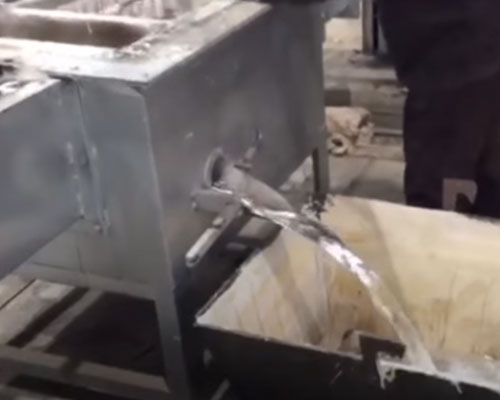Aluminum alloy purification adopts smelting furnace nitrogen powder injection refining and international advanced degassing filtration system. The online degassing system adopts rotor gas refining technology, which has high degassing efficiency and can achieve a satisfactory hydrogen removal effect, ensuring the casting the internal quality of the ingot.
Non-metallic debris and gas (mainly H2) in the melt are the key factors that affect the casting process and the quality of the ingot. Aluminum alloy has a serious tendency to oxidize and get gas. During the smelting process, it is in direct contact with furnace gas or the outside atmosphere. During smelting and molten aluminum transfer, gas and inclusions will be generated in the melt due to gas absorption and oxidation, which will make aluminum liquid cleanliness is reduced. Inclusions and gases in the metal have a significant impact on the strength, fatigue resistance, corrosion resistance, and stress corrosion cracking performance of aluminum alloy profiles.
Effectively controlling the oxidized inclusions of the melt to improve the internal quality of cast rods and slabs has become a common goal pursued by metallurgy, casting, and material processing. Aluminum plants can use a series of advanced aluminum alloy purification technologies such as powder refining flux injection refining, online degassing unit degassing, and ceramic foam filtering in the smelting furnace. This can ensure the quality of molten aluminum and ensure downstream processing.

During the smelting stage, part of the hydrogen content will be removed by lowering the melt temperature and melt refining, and most of the hydrogen will be removed by online refining equipment.
On-line degassing is generally achieved through dedicated on-line degassing equipment. When the degassing equipment works, a large amount of inert gas is ejected from the rotor, and becomes extremely tiny bubbles under the action of the high-speed rotating rotor, which is dispersed in the inner space of the degassing box, and the hydrogen in the melt will be absorbed by the small bubbles, the hydrogen content is reduced. Obviously, the better the bubble dispersion effect is, the better the degassing effect will be.
The online filtration system uses ceramic foam filter plates. In production, according to customer requirements, two-stage filtration is used to meet the filtration requirements of high-end customers.

